Pre-Park ConstructionThough Acadia National Park was founded in 1916, many of the trails that now define Acadia began as efforts by civic groups and private donors prior to the park's creation. The incredible island-wide trail system began with Rockefeller's in the mid-1800s. John D. Rockefellerr's construction of a carriage road system began in 1913 at his summer home in Seal Harbor and later on property held by the Hancock County Trustees for Public Reservations as a way to separate vehicles from horse and pedestrian traffic. 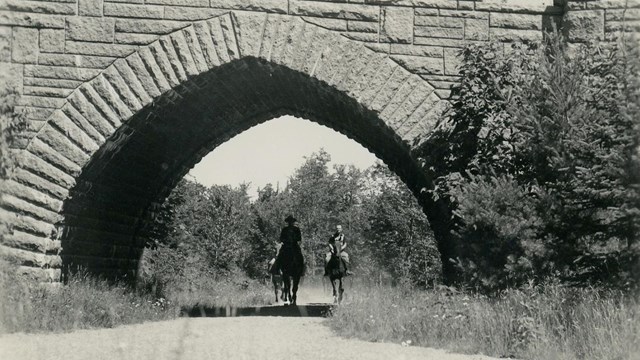
Carriage Roads & Gatehouses - 1913-1940
Learn the history behind the design, planning, and construction of the famous carriage road system. 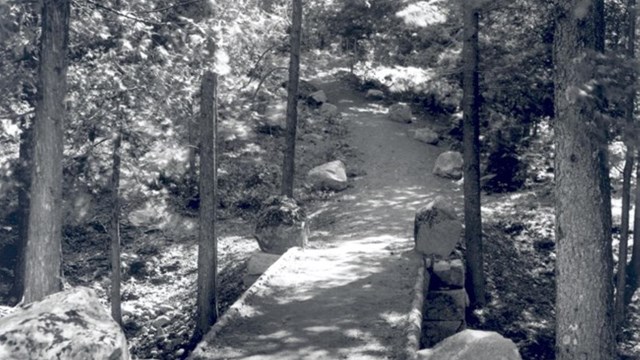
Historic Trails - 1800s - 1930s
Mount Desert Island’s present-day trail system evolved over centuries of human use and settlement of the land. 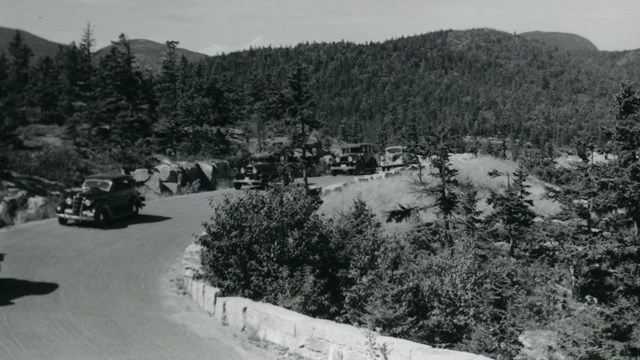
Motor Roads - 1922-1958
Acadia’s motor road system involved engineers, landscape architects, conservationists, local skilled laborers, the federal agencies. Park-Era Building BeginsOnce officially a 'national monument', and later 'national park', George B. Dorr and early park founders expanded the infrastructure of the park. Now thinking beyond local use, the new national park was focused on visitor planning for the future. By the mid 1920s, the park was attracting over 70,000 vacationers a year. A 1927 Master Plan attempted to envision a future visitor experience for the new national park. Much of the early park-era construction followed the 'rustic' style known as 'parkitecture' which utilized native and natural local materials in structures that looked built by hand even if they were modern in their engineering.The early days of park trail building included continuing the work of the Village Improvement Associations and the donation of new land and trails continued. The carriage road system underwent large scale expansion until 1940 when construction was completed on what would become a defining architectural, recreational, and landscape architectural characteristic of Acadia National Park. These two transportation systems were joined by a motor road system starting in 1922 and later new visitor infrastructure including bridges, campgrounds, picnic areas, ranger stations, and administrative facilities. The motor road construction was a unique collaboration between Rockefeller and the federal government as several segments of what would become the Park Loop Road were funded and architecturally-directed by Rockefeller and donated to the federal government. 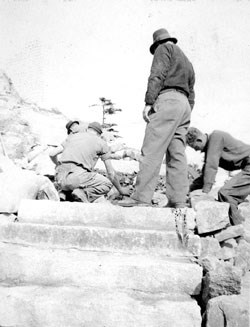
The New Deal Era (1933-42)In the dark days of the Great Depression, President Franklin D. Roosevelt's New Deal provided massive investments in infrastructure in national parks through Emergency Conservation Works programs, including the Works Progress Administration, Civilian Conservation Corps, and others. These emergency work programs carried out much of construction at Acadia during this era and their handiwork is mostly still utilized by today's visitors. It was during this era that the military radio station facilities were constructed as Schoodic Point, Seawall, and at the summit of Cadillac Mountain. In 1937, maintenance of the trails within the park was formally transferred from the Village Improvement Societies to the National Park. Civilian Conservation CorpsEarly park Superintendent George B. Dorr saw a huge opportunity in Roosevelt's Civilian Conservation Corps (CCC) program, which put unemployed young (mostly white) men from urban areas to work in rural U.S. Army-run camps across the country. He petitioned Roosevelt for a camp to be stationed at Acadia. His wish became reality when one of the program’s earliest camps was established at Eagle Lake, the current site of park headquarters. Soon a second camp was established near Southwest Harbor, the Great Pond Camp. The “CC boys” also performed most of the work in constructing the park’s two now-historic campgrounds, Blackwoods and Seawall and the Bear Brook campground (now picnic area). They also built the stunning and unusual trails that lead hikers into the heart of Acadia such as the Ocean Path and Perpendicular Trail, the Beech Cliffs Ladder Trail, and parts of the Dorr Mt. Ladder Trail. They built a small number of access roads including the circular road at Sieur de Monts Spring that still exists today and the Seawall and Blackwoods campground loop roads, and the Fish House Road at Otter Creek. The CCC contributed to building infrastructure at the Cadillac Summit and in the Thunder Hole area and the Oak Hill, Pine Hill, and Pretty Marsh picnic areas. 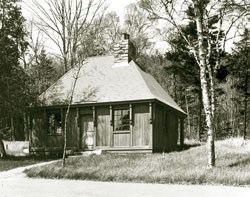
Thunder HoleThe Ranger Station at Thunder Hole was the park’s first such building when constructed in 1934 by the Works Progress Administration (WPA) and is now a gift shop and information center. Unlike the CCC, WPA crews were primarily comprised of local laborers and were in many cases integrated (though this was not the case at Acadia). The one-story building’s hipped roof and gray board and batten siding reflect the Rustic Design style used throughout the park. The parking lot and two access roads were designed by the Olmsted Brothers landscape architecture firm during the reconstruction of the Ocean Drive section of the Park Loop Road in 1933-1934, and were intended to move parking off of the drive so as not to impact the views of the ocean. Rough cut granite curbs, stone steps, and new plantings installed by the Civilian Conservation Corps (CCC) still remain, contributing to the site’s rustic character. The Post-War EraMuch of these new-deal era facilities are still in use today. The Great Fire of 1947 burned many park facilities and had a great impact on park-built infrastructure.In 1949, the Nature Center at Sieur de Monts Spring was constructed as was the amphitheatre at Blackwoods Campground. Mission 66 (1956-66)In anticipation of the 50th anniversary of the National Park Service in 1966, the agency undertook a major program formally begun in 1956 to upgrade park facilities. Much of the Mission 66 design work at Acadia focused on already developed areas and substantial projects were developed for Echo Lake and the new visitor center and park headquarters area at Hulls Cove. Hulls Cove work included the large parking lot, spur road construction, and the 52 steps to a visitor center and park headquarters building. The Hulls Cove building was designed by the National Park Service's Philadelphia Planning and Service Center in 1966 and construction was completed in 1967. The Bureau of Public Roads completed the last leg of the Park Loop Road at Thunder Hole in 1958 and new trails were built at Ship Harbor, Thunder Hole and Beech Mountain.In the 1960s, plans improvements for picnic and swimming areas took place including Frazer Point, Thompson Island, Bear Brook, as well as restroom and changing facilities at Echo Lake and Sand Beach. Park administrative facilities including employee housing, a new park headquarters building and maintenance shop were constructed. Some CCC-era structures were demolished by this time period including picnic shelters at Oak Hill and Pine Hill. 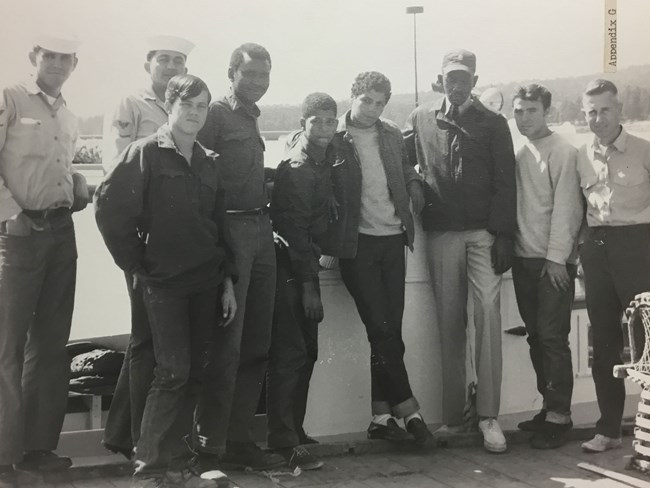
Job CorpsAcadia National Park was one of nine Job Corps centers operating in national parks from 1965-1969. Starting in April of 1966, up to 124 men were working in the job skills training program at Acadia. Job Corps began as a Civil Rights era social program under Lyndon B. Johnson’s “War on Poverty” initiative. The program was patterned after the depression-era Civilian Conservation Corps (CCC) of the 1930s. Job Corps was initiated in a few select parks with the goal of providing “a hand up, rather than a hand-out” to an underemployed, urban workforce from African American and other communities of color during the 1960s. Unlike the CCC, Job Corps was racially integrated and included the goal of providing education and vocational skills. One hundred and twenty men entered the program at Acadia in 1966; the majority of whom came from urban areas mostly on the east coast and the south, with a small group coming from the U.S Virgin Islands.Preserving A History In MotionAfter the Mission 66 era, Acadia National Park staff continued maintaining for existing structures and planning for the future. In 1979, the historic Jordan Pond house burned and construction of the new facility took place in 1982. In 1992 a General Management Plan recommended many improvements for the park infrastructure.The incredible built infrastructure of Acadia National Park is a living part of the landscape. These structures, roads, campgrounds, and other facilities are in use and they have been for hundreds of years. Acadia National Park staff and our partners continue to maintain and preserve these sites for future generations. 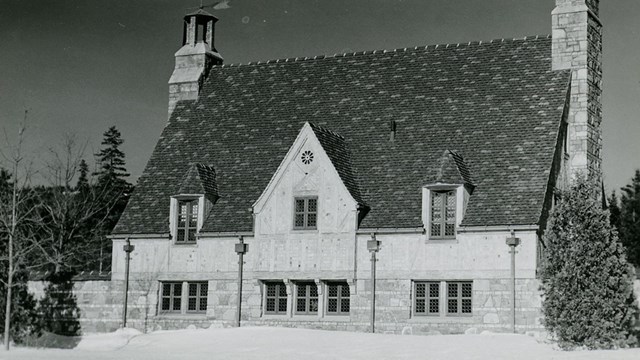
Historic Structures & Bridges
Learn about the buildings, bridges, and other historic structures of Acadia and the people who built them. 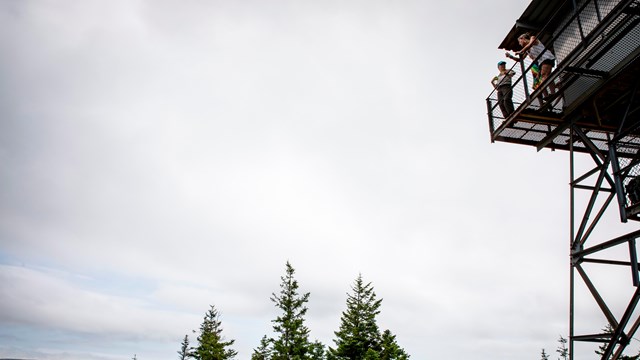
Fire Towers
Two lookouts were located on Beech Mountain and Sargent Mountain, and used for short periods of the park's history. 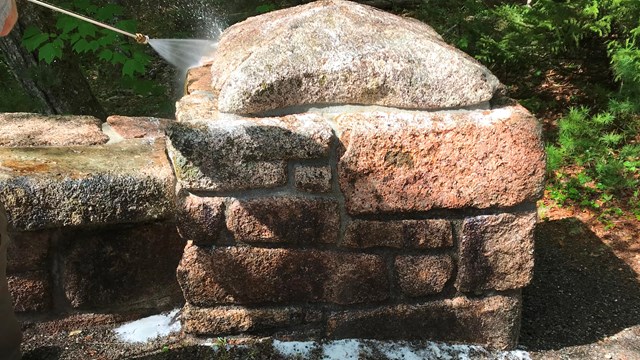
Preserve History
Learn more about the many ways that Acadia preserves its historic resources including historic structures, museum collections, and data. |
Last updated: September 14, 2022
